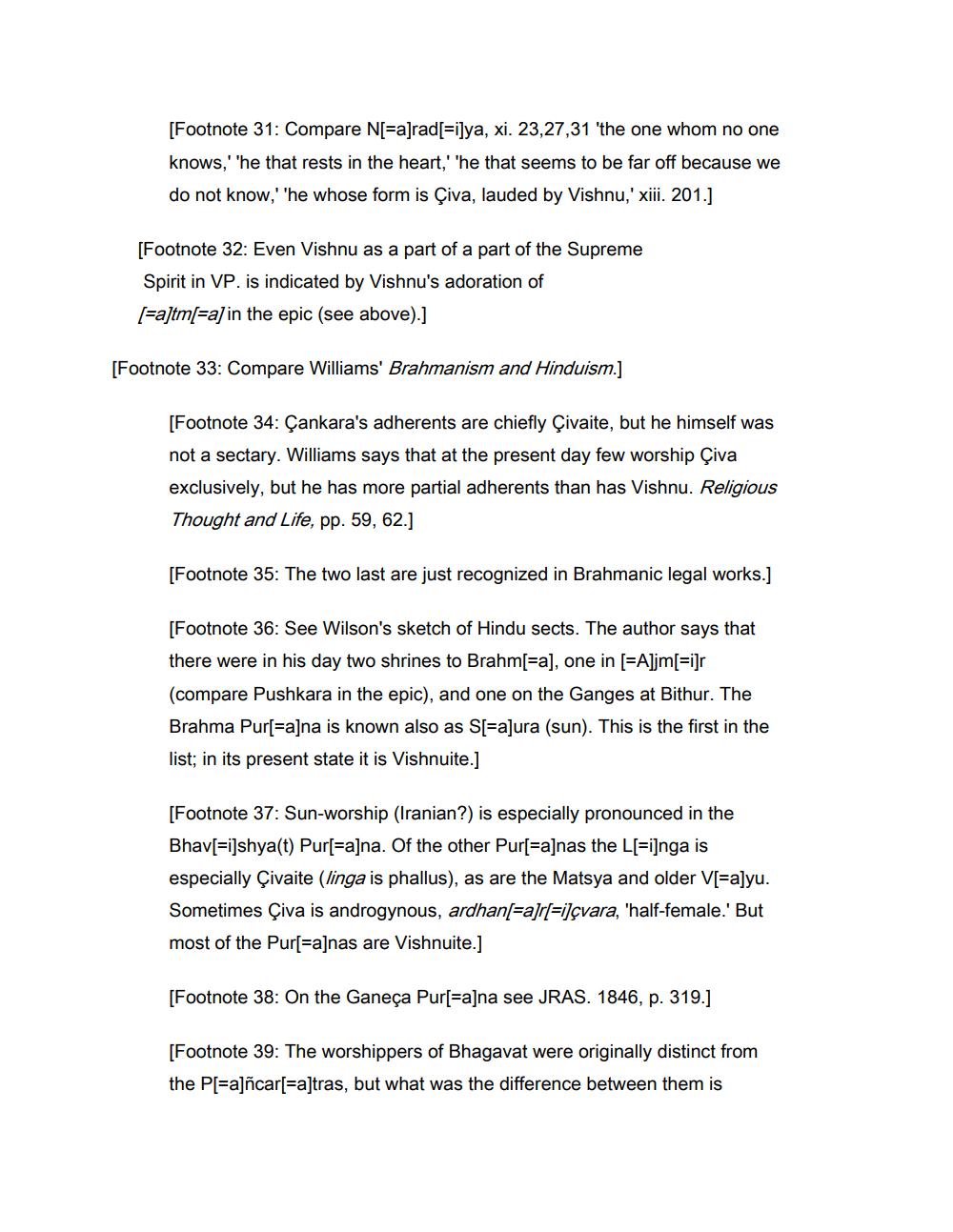________________
[Footnote 31: Compare N[=a]rad[=i]ya, xi. 23,27,31 'the one whom no one knows,''he that rests in the heart,' 'he that seems to be far off because we do not know,' 'he whose form is Çiva, lauded by Vishnu,' xiii. 201.]
[Footnote 32: Even Vishnu as a part of a part of the Supreme
Spirit in VP. is indicated by Vishnu's adoration of [=a]tm[=a) in the epic (see above).]
Footnote 33: Compare Williams' Brahmanism and Hinduism.]
[Footnote 34: Çankara's adherents are chiefly Çivaite, but he himself was not a sectary. Williams says that at the present day few worship Çiva exclusively, but he has more partial adherents than has Vishnu. Religious Thought and Life, pp. 59, 62.]
[Footnote 35: The two last are just recognized in Brahmanic legal works.]
[Footnote 36: See Wilson's sketch of Hindu sects. The author says that there were in his day two shrines to Brahm[=a), one in (=Aljm[=i]r (compare Pushkara in the epic), and one on the Ganges at Bithur. The Brahma Pur[=a]na is known also as S[=a]ura (sun). This is the first in the list; in its present state it is Vishnuite.]
[Footnote 37: Sun-worship (Iranian?) is especially pronounced in the Bhav[=i]shya(t) Pur[=a]na. Of the other Pur[ra]nas the L[=i]nga is especially Çivaite (linga is phallus), as are the Matsya and older V[=a]yu. Sometimes Civa is androgynous, ardhan(=a]r[=isçvara, 'half-female.' But most of the Pur[=a]nas are Vishnuite.]
[Footnote 38: On the Ganeça Pur[=a]na see JRAS. 1846, p. 319.]
[Footnote 39: The worshippers of Bhagavat were originally distinct from the P[=a]ñcar[=a]tras, but what was the difference between them is




